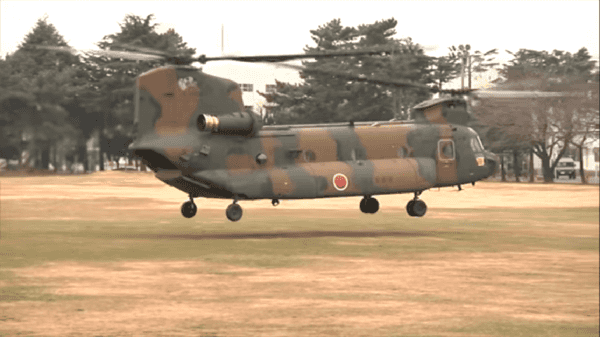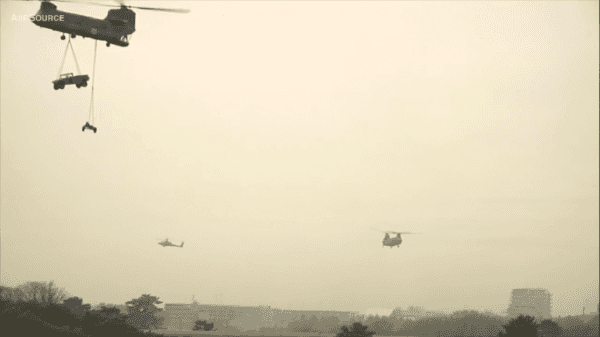After the defeat and surrender following WWII, the people of Japan approved a new constitution on which it vowed to never again raise an army for any other purpose other than self-defense. Incredibly enough, an island, or an actual archipelago, was able to conquer most of the countries in the Pacific Ocean, including giants like China and Korea. After having not one but two atomic bombs dropped in their yard, everyday Japanese people elected to curb the country’s military response into what’s now known as a “pacifist constitution.”
Pacifism that doesn’t mean they gave up their right to self-defense, however. As history has shown through the centuries, Japanese can and will fight with the best of them. In some cases, like these elite paratroopers’ units show, they can fight even better.

(AiirSource Military/YouTube)
In this video, some of the Japan Self-Defense Forces Elite Airborne units participated in an annual military drill at Camp Narashino, on the outskirts of Tokyo. The units are with Ground Self-Defense Force, 1st Airborne Brigade. They show the rest of the world how to get it done from above.
Watch them fall from the aircraft, one by one, and their parachutes open effortlessly. They safely drop and are ready for anything that comes their way. Vehicles are parachuted from the aircraft while some come in on cycles that can quickly collapse.
Watch how they do it:
They head quickly to their assembly points. These types of drills are conducted annually, and US Army paratroopers and Special Forces are often involved to highlight the importance of the Japan-US alliance.
The 1st Airborne Brigade of the Japan Ground Self-Defense Force (JGSDF) is an elite parachute and heliborne operations group consisting of around 2,000 personnel. They are view as some of the strongest troops in the JGSDF. The unit is tasked with countering guerrillas or enemy Special Forces, or carrying out Non-combatant Evacuation Operations (NEO) on foreign or domestic soil.

(AiirSource Military/YouTube)
They are a key part of Japan’s “dynamic defense force” that requires “readiness, mobility, flexibility, sustainability and versatility,” according to Japan’s National Defense Program Guidelines.
The 1st Airborne Brigade wasn’t formally added until 2007 but quickly became a significant part of the Central Readiness Force. However, in 2008, the CRF was eliminated and the 1st Airborne Brigade then became part of the Ground Central Command.
Japan’s Ground Self-Defense Force states, “The most significant characteristic of the Central Readiness Force is the capability to respond to the operational needs, both in and out of the country, with its high-mobile and specialized subordinate units.”



